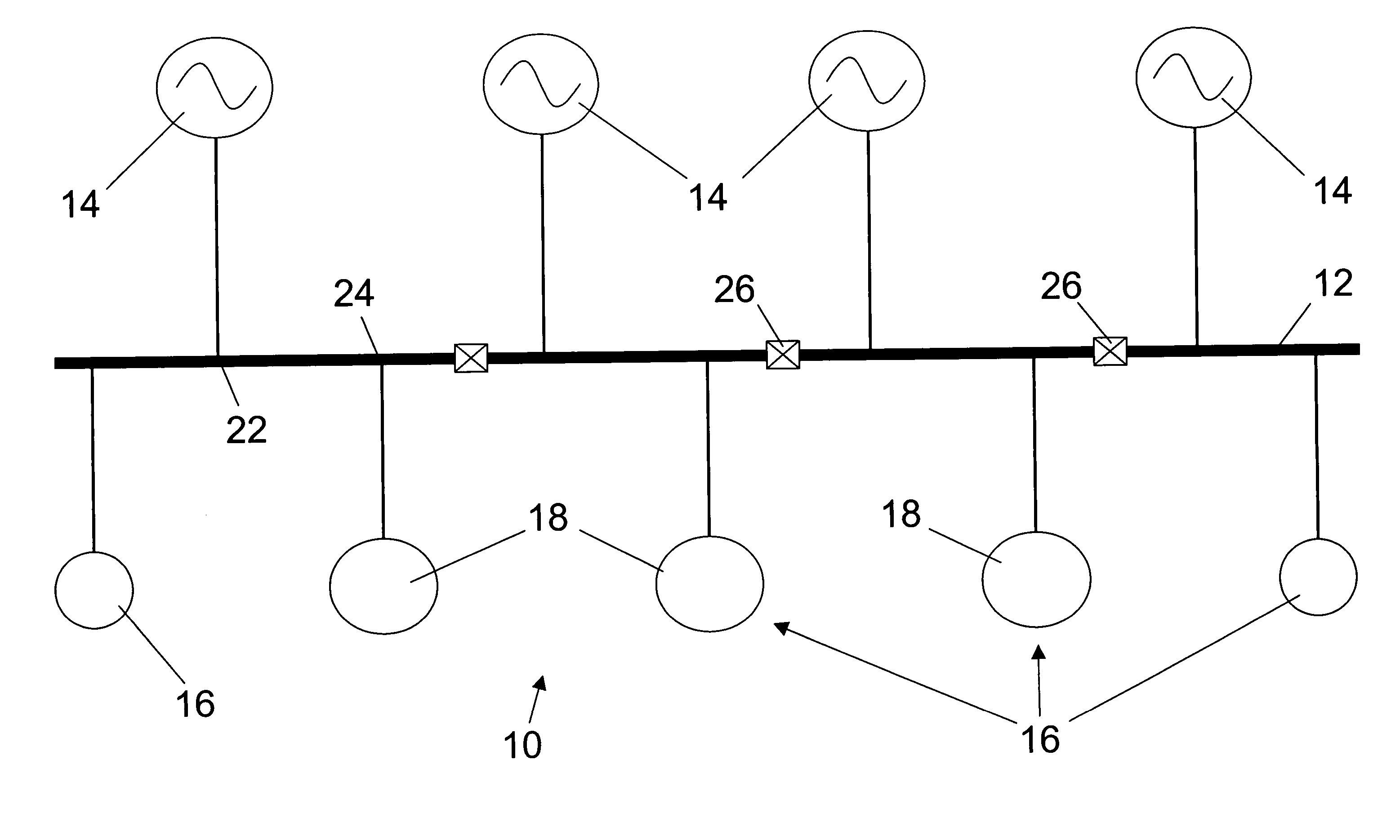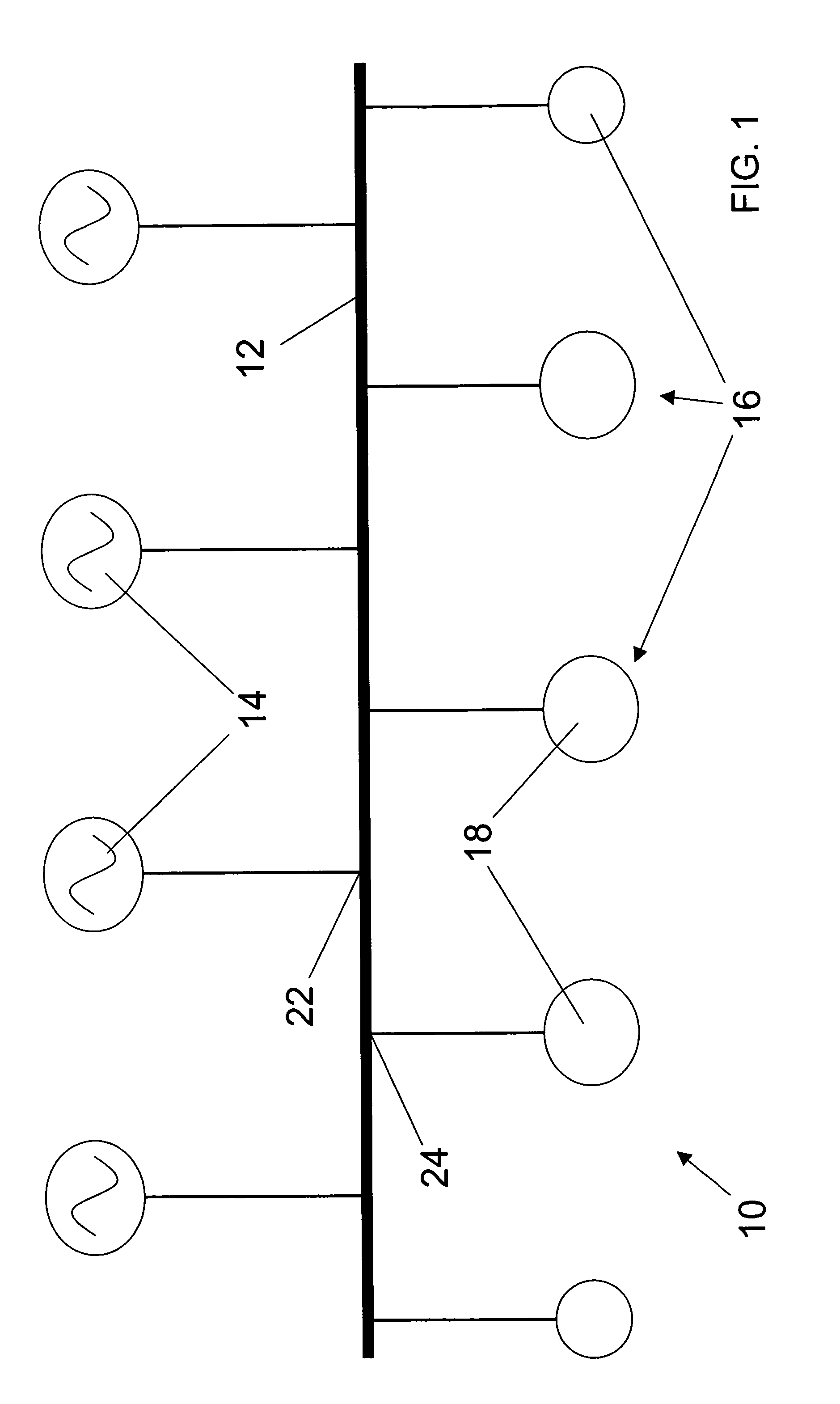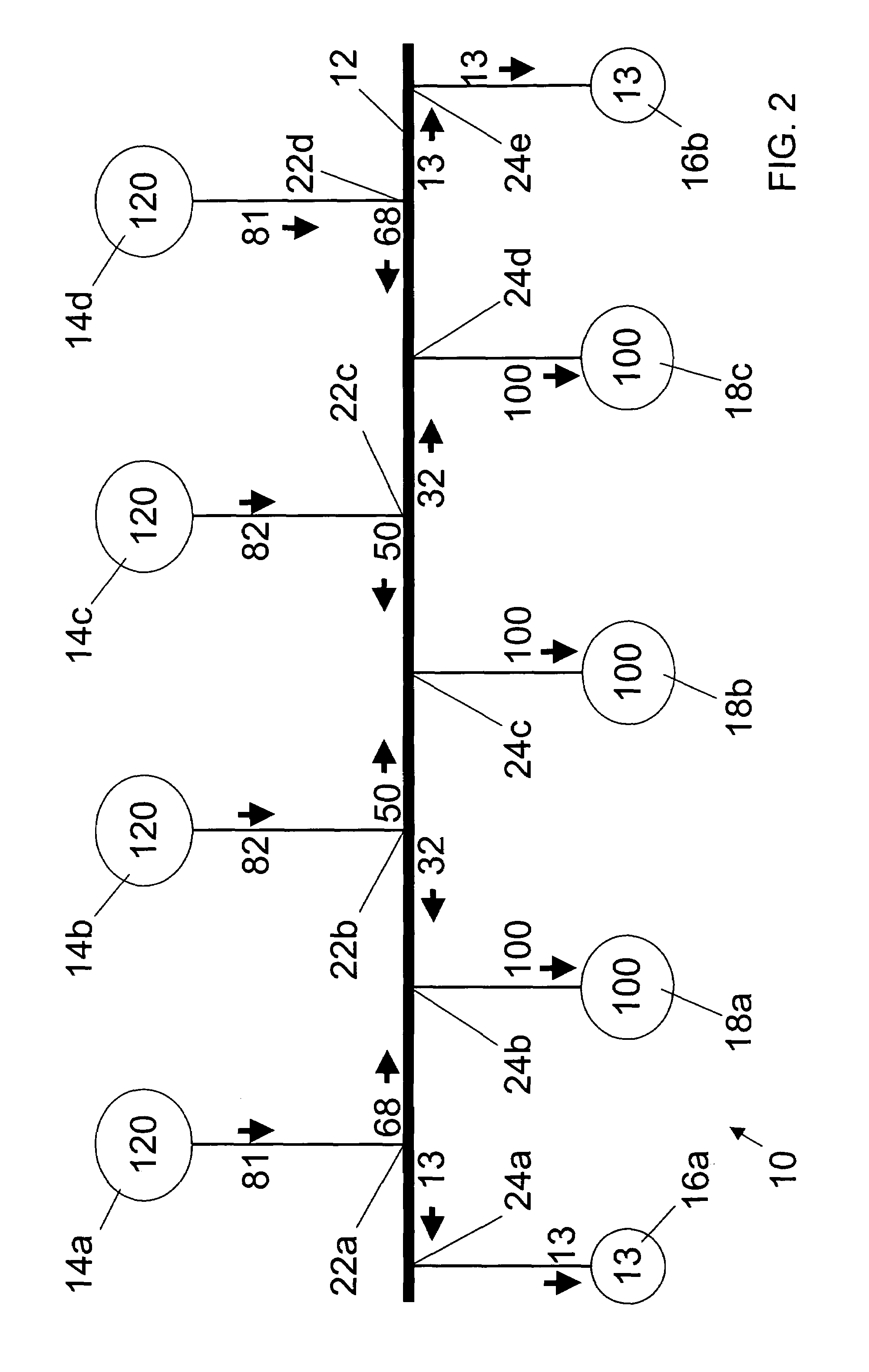Stand-alone electrical system for large motor loads
a technology for motor loads and electrical systems, applied in the field of electric power systems, can solve the problems of high current flow toward short-circuits, and achieve the effect of minimizing the impact of short-circuits
- Summary
- Abstract
- Description
- Claims
- Application Information
AI Technical Summary
Benefits of technology
Problems solved by technology
Method used
Image
Examples
Embodiment Construction
[0032]Referring to FIG. 1, the preferred electrical power system 10 constructed in accordance with a preferred embodiment of the present invention is illustrated as part of a Liquified Natural Gas (LNG) facility. Preferably, the LNG facility is a cascaded-type LNG facility employing at least one open refrigeration cycle. For example, the LNG facility may be similar to that described in U.S. patent application Ser. No. 10 / 286,292, the entire disclosure of which is incorporated herein by reference. The system 10 broadly comprises a primary bus 12 connected between a plurality of generators 14 and a plurality of electrical loads 16, such as electrical compressor motors 18 used in the LNG facility. The LNG facility typically uses compressors in converting natural gas from a gaseous state to a liquid state, otherwise known as LNG. As a result, the motors 18 are typically the LNG facility's biggest power consumer.
[0033]While the compressors may be driven directly by gas turbines, the comp...
PUM
| Property | Measurement | Unit |
|---|---|---|
| voltage | aaaaa | aaaaa |
| voltage | aaaaa | aaaaa |
| total power | aaaaa | aaaaa |
Abstract
Description
Claims
Application Information
 Login to View More
Login to View More - R&D
- Intellectual Property
- Life Sciences
- Materials
- Tech Scout
- Unparalleled Data Quality
- Higher Quality Content
- 60% Fewer Hallucinations
Browse by: Latest US Patents, China's latest patents, Technical Efficacy Thesaurus, Application Domain, Technology Topic, Popular Technical Reports.
© 2025 PatSnap. All rights reserved.Legal|Privacy policy|Modern Slavery Act Transparency Statement|Sitemap|About US| Contact US: help@patsnap.com



